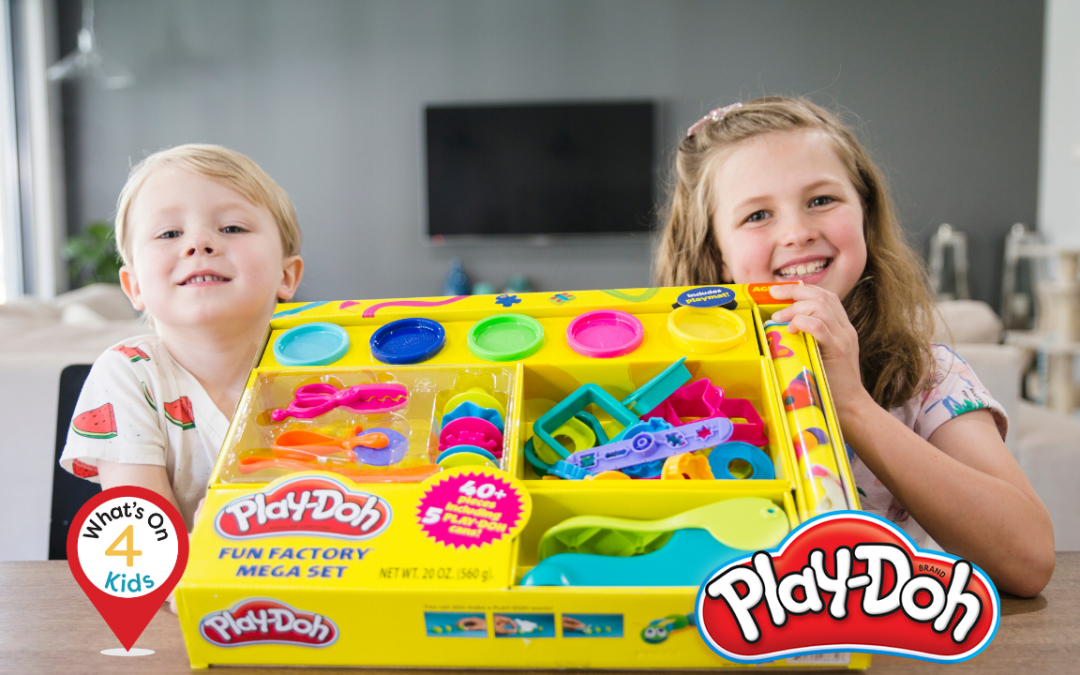As a busy mum of three, Play-Doh has always been one of the play options on rotation at home. As an Occupational Therapist, it is also a valuable tool to use when working with toddlers and pre-schoolers who are developing their fine motor skills.
Manipulating Play-Doh through a range of different activities encourages important pre-writing skills in pre-schoolers such as holding a pencil to draw, cutting with scissors, opening lunch boxes/drink bottles and getting themselves dressed.
There is a wide range of developmental benefits to playing with Play-Doh (including Cognitive development, Sensory development, Relaxation, Imagination Creativity), but this blog is going to be exploring the way Play-Doh can develop fine motor skills in 3-5-year-olds, an important part of pre-writing development. Delays or difficulties with fine motor skills is a common reason children are referred to see a paediatric Occupational Therapist.
What is an Occupational Therapist?
Occupational Therapists who work with children can do this in hospitals, clinics, in the home or in a childcare/school-based setting. Occupational Therapists can assist children with a variety of everyday life skills including eating, toileting, dressing, and playing, as well as addressing fine motor, visual motor, sensory processing and emotional regulation concerns with children.
Some of the children Occupational Therapists can work with might have a diagnosis such as Autism Spectrum Disorder, Developmental Delay, cognitive delays, sensory processing disorder, Down Syndrome, Cerebral Palsy, or may just require extra assistance and opportunities to practice tasks of everyday living, or learn how to modify the task or do it another way.
What are Fine Motor Skills?
Fine motor skills are one of the most important skill sets of your body. The muscles in your hands and fingers may be small but they have a lifetime of complex work ahead of them, including handwriting, typing, eating, brushing teeth, playing musical instruments, doing up buttons and zips, putting on makeup and for children playing.
To successfully complete these important tasks, you also need visual perceptual skills, appropriate attention, and motivation, sensory processing abilities, motor planning, and cognition skills (thinking and problem solving). I will be exploring the benefits of Play-Doh and developing fine motor skills through some key areas of development.
How to Build Shoulder and Arm Strength
Shoulder and arm strength is a very important requirement for completing tasks with your hands. The following activity suggestions teach children about how much or how little pressure to use which is a foundation for other tasks in the future such as cracking eggs, colouring in, brushing teeth etc.
Some simple activities to develop shoulder and arm strength include:
- Flattening Play-Doh with your hands on a table. Have the child stand up if possible and lean over the table, to push their full body weight downwards through their arms
- Rolling out Play-Doh with a rolling pin to make pretend pancakes, create a face or a pizza
- Pushing Play-Doh through the press to make ‘spaghetti’ or other designs
- Pushing hidden objects into the Play-Doh for a treasure hunt e.g pasta and coins
- Pushing cookie cutters into the Play-Doh to make shapes (this can be graded by having the Play-Doh thicker)
- Pulling balls of Play-Doh apart

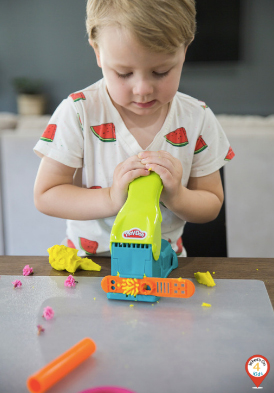
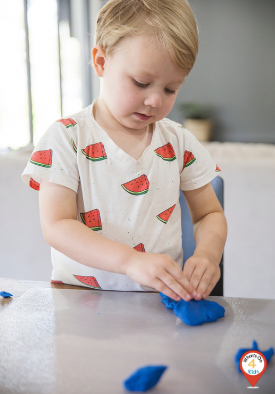
How to Develop Finger & Hand Strength
The squishing, squashing, rolling, pinching and flattening of Play-Doh all develop children’s muscles in their hands and fingers. Finger strength is important for speed and dexterity while drawing and writing later on in school.
Some simple activities to develop finger and hand strength include:
- Rolling out a snake and pinching along the top to create a crocodile or lizard’s tail
- Rolling balls and pinching them to break them into two pieces
- Squeezing a ball of Play-Doh with your fingers or fist
- Pushing googly eyes, accessories and other objects into the Play-Doh
- Finding hidden ‘treasure’ in the Play-Doh
- Pushing cookie cutters into the Play-Doh
- Poking it with fingers or making a pinch pot
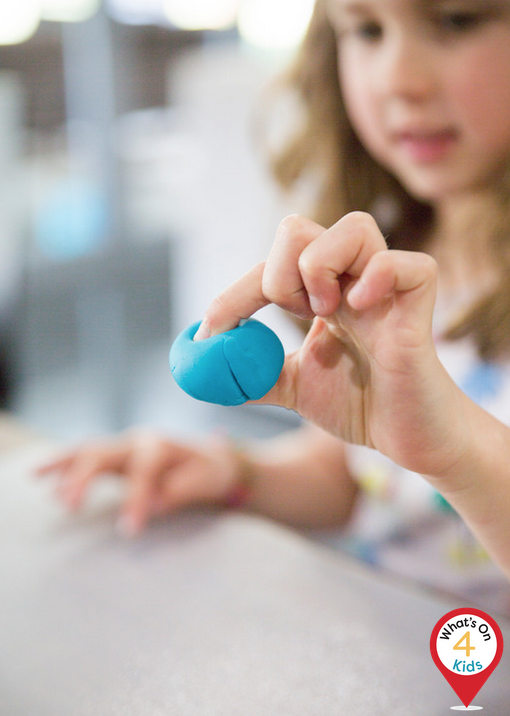
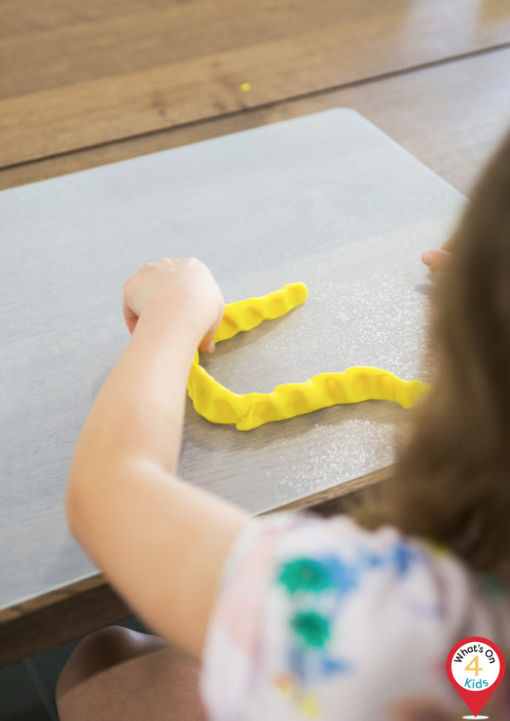
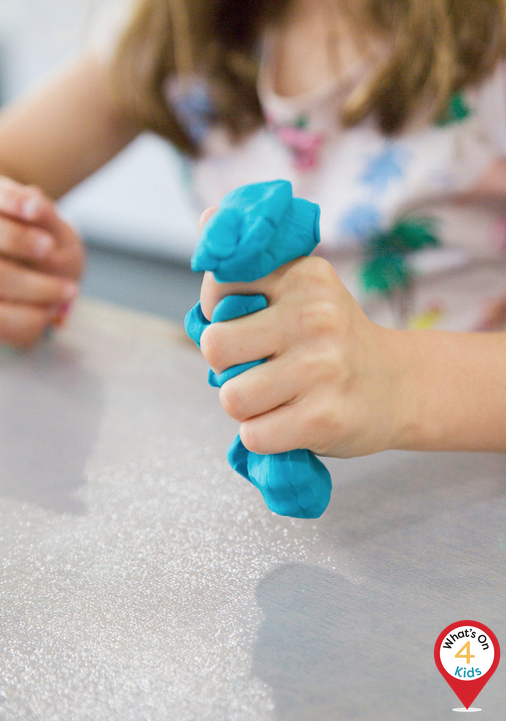
How to Develop Eye-Hand Coordination
Eye-hand coordination is the ability of the child to coordinate eye movement with hand movement.
Some simple activities to develop this skill includes:
- Use tongs (similar motor patterns to using scissors) to pick up balls of Play-Doh. Make sure the child uses their index, thumb and middle fingers during this activity.
- Build letters and numbers out of the Play-Doh by bending it into shape. You can talk about big and little lines and curves and how they work together to makes numbers and shapes
- Create 3D designs (4-5 years) where they can show off their developmental skills as well as be creative and use their imagination

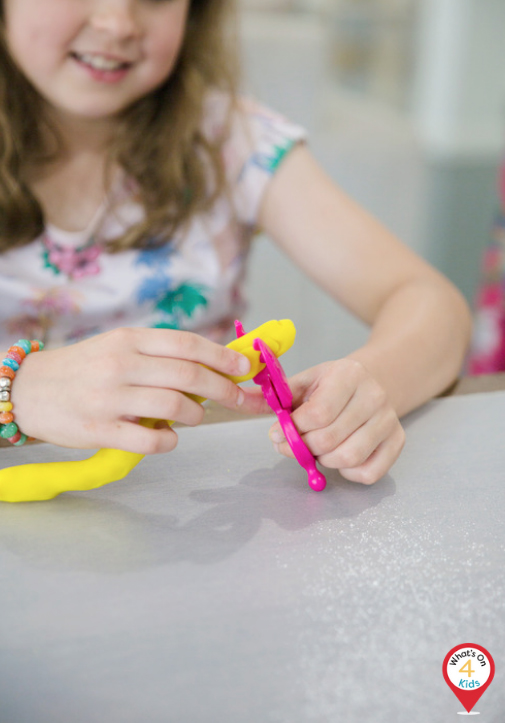
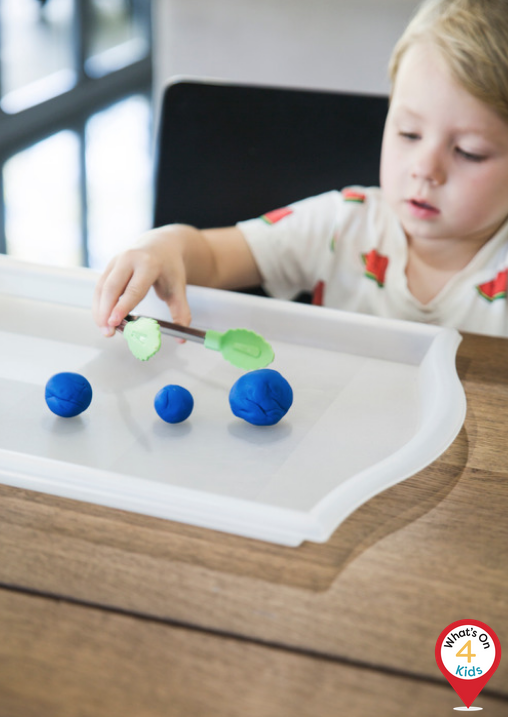
How to Develop Bilateral Coordination
This involves using two hands together to complete a task. Both hands could be doing a similar action or one could be the doing the hand and the other the supporting one.
Some simple activities to develop bilateral coordination include:
- Rollings balls and snakes (harder than it sounds as the right pressure is important or it will get squashed)
- Cutting Play-Doh with scissors. It may begin with just snipping and progressing to cutting out shapes by cutting all the way through a piece of Play-Doh
- Practice using utensils. You can use plastic or non sharp knife to cut through the Play-Doh and make pretend gnocchi (pasta)
- Make a pinch pot (3-4 years) or a coil pot (4-5 years)

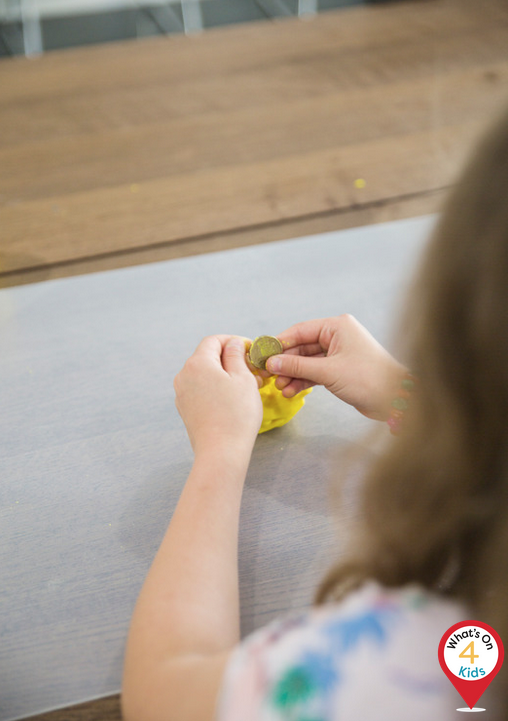
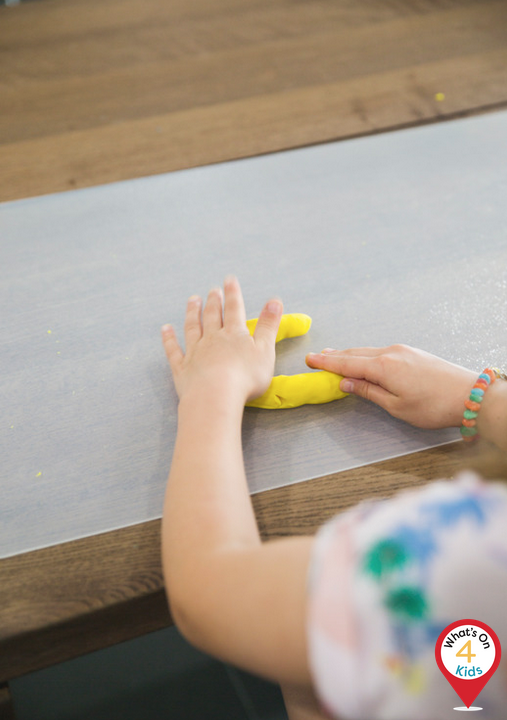
You can buy Play-Doh at great prizes from Amazon Australia here.
This blog was written as part of a collaboration with Hasbro (Play-Doh). I am working with Play-Doh to create a series of blog content on how to encourage child development through one of the worlds most well known and popular forms of play. Play-Doh is affordable and accessible and can be modified according to the task required. This content has been written in accordance with the guidelines as published by the Australian Health Practitioner Regulation Agency (AHPRA). This information is general in nature and should not replace professional advice or opinion given by a health professional or doctor. The children featured in this blog are my own children and not patients or clients. The photographs must not be reproduced, copied or edited without permission.

